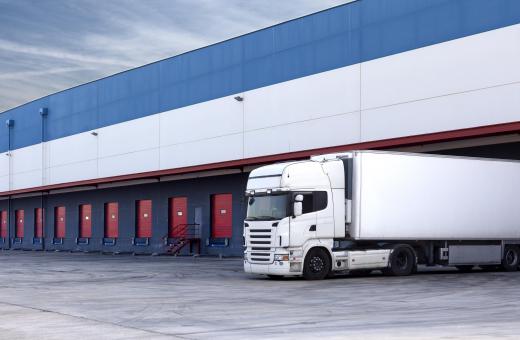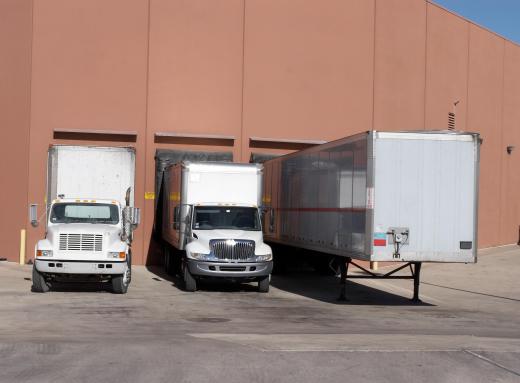A loading bay is an area devoted to the loading and unloading of goods to or from a transport vehicle of some sort. This is a very broad term, covering many types of facilities, but the term most often applies to an area in a building where trucks are loaded and unloaded. Most often these areas will have several individual bays to allow for the loading or unloading of several trucks at one time. A series of loading bays may have a shared platform that runs along the length of the loading area.
Warehouses, factories, mail and freight transfer stations, and other commercial and industrial buildings commonly have loading bays, which are also sometimes called loading docks. Many theaters and arenas have loading bays for large trucks as well. A loading bay is often partially recessed into the building, but may be flush with the exterior, or even fully enclosed within the building itself. Loading bays often have ramps which raise or lower trucks to bring the bed on a level with the floor of the loading bay, facilitating loading and unloading and allowing the use of vehicles like pallet jacks and forklift trucks.

Machinery like dock levelers and dock lifts may be used bridge the space between the loading bay and the bed of the truck. These adjustable platforms allow trucks of any bed height to be unloaded at a given dock. These machines use hydraulics to raise or lower the platform to the desired height.
For safety, a loading bay will be equipped with some type of restraining equipment for the trucks. This equipment may be as simple as chock blocks that are placed around the wheels to prevent the truck or trailer from rolling, or may be sophisticated mechanical systems which are used to attach a stout hook to the underneath of the vehicle's frame and hold it in place. These safety devices are sometimes used together.

Bumpers are often present on a loading bay to protect the truck or trailer and the building. Usually constructed of thick, strong rubber, these simple preventative devices can help drivers avoid serious damage to their truck, trailer, and the loading dock itself. Most loading bays are also equipped with bright lights to provide maximum visibility to the drivers and workers. Convex mirrors may be mounted in strategic locations to aid drivers in backing into and parking in narrow bays. Some loading bays have dock seals that seal the truck to the building to protect workers and freight in poor weather or to prevent loss of cold air in refrigerated or freezer warehouses.
